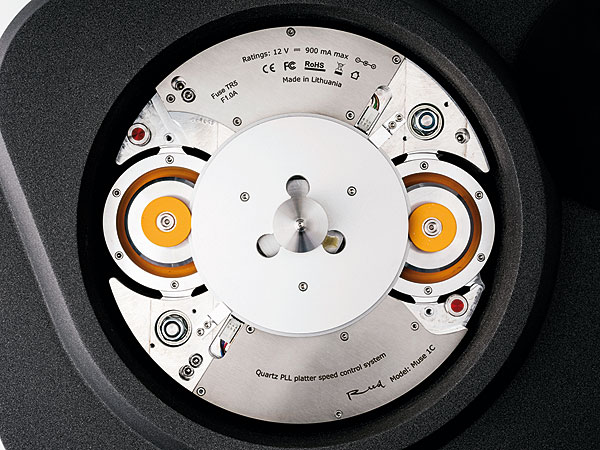Reed Muse 1C/3P Turntable Idle Thoughts
Old-school idler-drive decks from the 1950s onwards – including Garrard's 301, 401 and the Thorens TD 124 – pre-dated the modern direct- and belt-drive solutions that have subsequently dominated the market. These classic models typically employed a motor, stepper pulley and rubber capstan wheel that was engaged up against the inside rim of the turntable platter, 'driving' it along. A separate braking system was added to stop the platter in its tracks but problems with these solutions could manifest over time. For example, the mechanisms were typically greased rather than oiled, and could gum up in less than dust-free environments. Similarly, leaving the capstan wheel pressed up against the platter or stepper pulley when not in use could result in flat spots along its edge. Increased wow & flutter was the upshot just as noise was injected directly into the platter as the 'shaded pole induction' motors aged and the rubber compounds hardened.

Reed's solution is not only more 'direct' but also benefits from improved rare-earth magnet/motor technologies, quartz-locked speed control electronics and the promise of improved mechanical tolerances. In this case the platter is not driven via its rim but via two high-speed DC motors with soft polymer pulley wheels [the orange discs in our inset picture] that press up against the periphery of a sub-platter. Both motors pivot on a suspension and are drawn, via an electronic clutch, either away from the sub-platter or onto its edge when in play. And, because the 16-78rpm speeds are directly governed by the electronics and DC motor, there's no need for a stepper pulley. So, as direct-drive is making a comeback, will modern 'idlers' be the next big thing in vinyl replay? PM
























































